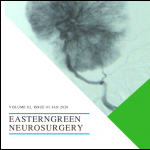Outcome of Bell’s Palsy- An Institutional Study
DOI:
https://doi.org/10.3126/egn.v2i1.27465Keywords:
Physiotherapy, Facial Nerve Palsy, Bell’s PalsyAbstract
Background and purpose: Bell’s palsy represents sudden onset of lower motor neuron type of facial palsy in the absence of other cranial nerve involvement. Pathophysiologically, it has been described mostly due to viral infection, and early use of antiviral therapy, steroids and physiotherapy has shown to limit the disease and helps in early recovery from palsy. With the objective to evaluate over all clinical outcome of the patients presented with Bell’s palsy with our treatment strategies this study was performed.
Material and method: This is a prospective analytical study with non probability consecutive sampling technique over the duration of 6 months. Continuous variable like age is presented using mean and standard deviation. Categorical data are presented as percentage and analysis of outcome of the treatment is done using Fischer’s exact test. Statistical analysis was done using SPSS -20.
Result: Total number of patients enrolled in the study was 19, where mean age was 33.47 (SD 15.71) years. Bell’s palsy was more commonly seen in female patients (58%). House Brackmann grading of facial nerve palsy at the time of presentation was four. There was significant association of early treatment with complete recovery in this study.
Conclusion: Early treatment of bells palsy with acyclovir, steroids, and physiotherapy has shown promising result in most of the studies; and this holds true in this study as well, where delaying the treatment was significantly associated with poorer recovery.




